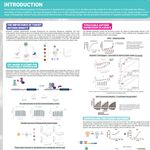
-
Ravinder Singh, PhD
Director, Endocrine Laboratory, Mayo ClinicBIOGRAPHY
DATE: May 23, 2017
TIME: 10:00am PT, 1:00pm ET
A number of studies have shown that vitamin D deficiency is very common in both the developing and developed world. This has increased the interest of the general public. Vitamin D is a generic designation for a group of fat-soluble, structurally similar sterols including ergocalciferol D2 from plants and cholecalciferol D3 from animals. Vitamin D in the body is derived from 2 sources: exogenous (dietary: D2 and D3) and endogenous (biosynthesis: D3). Endogenous D3 is produced in the skin from 7-dehydrocholesterol, under the influence of ultraviolet light. Both forms of vitamin D have similar biologic activities. Exogenous or endogenous Vitamin D3 are rapidly converted to 25(OH)D3 by liver vitamin D3-25 hydroxylase thus Vitamin D3 has very short half-life in circulation. Additional hydroxylation of 25-OH vitamin D takes place in the kidney1-alpha hydroxylase (CYP27B1), producing bioactive hormone 1,25-dihydroxy vitamin D (1,25-(OH)2-D). Production of 1,25-(OH)2-D is therefore tightly regulated through concentrations of serum calcium, phosphorus, and parathyroid hormone. 1,25-(OH)2-D a hormone, plays a critical role in calcium absorption through interaction with vitamin D receptor (VDR). Excess 25-OH vitamin D is removed from circulation and is converted to inactive 24, 25-dihydroxy vitamin D (24,25-(OH)2-D), catalyzed by 24 hydroxylase (CYP24A1). CYP24A1 gene, encoding the vitamin D-24-hydroxylase, is of major clinical and physiologic importance, serving to regulate the catabolism of 1,25-(OH)2D, the physiologically active vitamin D metabolite. In addition to facilitating catabolism of 1,25-(OH)2D, CYP24A1 also enhances the turnover and elimination of 25-OHD, the abundant precursor metabolite and storage form of the vitamin D.
Learning Objectives:
- Pathophysiology of Vitamin D
- Applications in the Clinical Laboratories
Sponsored By: Thermo Fisher Scientific
Please update your information
Certificate of Attendance
DOWNLOAD CERTIFICATE





